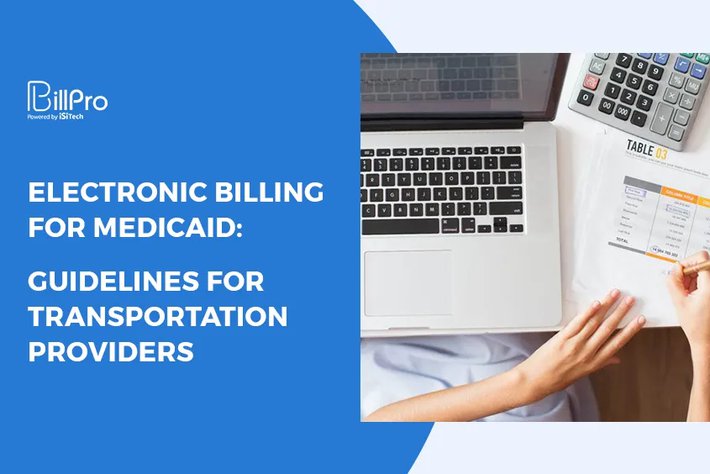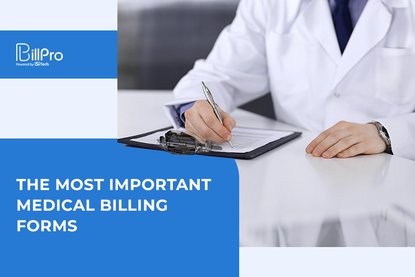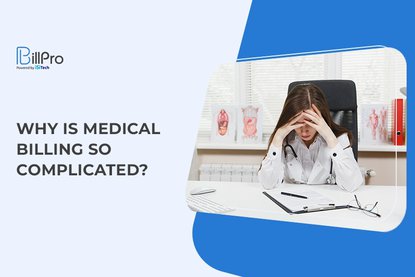Non-emergency medical transportation providers do honorable but hard work. To take orders from Medicaid transportation management company MAS, drivers and vehicles must be certified and ready to deal with specific problems of their passengers.
Unfortunately, those aren’t the only problems providers face while performing their responsibilities. One of the biggest Medicaid billing issues is creating claims and other billing operations to get reimbursements.
Filing claims for Medicaid is a complicated procedure since Medicaid programs and billing requirements vary from state to state. So, claim forms and formats (e.g., Medicaid electronic funds transfer form) might change by state. Besides, claims must contain specific information like National Provider Identifier (NPI), place of service, the list of performed procedures and their cost, and patient diagnoses. It’s vital to fill claims correctly and send them “clean” to payers, otherwise, they’ll be rejected or denied. What are the reasons for rejection or denial?
- Incorrect provider and/or patient information
- Mismatched medical codes
- Leaving out codes for procedures and diagnoses
- Incomplete documentation from a healthcare provider
- Duplicate billings
Clean claims with no errors and inaccuracies ensure fast reimbursements.
All providers agree that claim management is a complex procedure, especially when they perform tens of orders per day. However, the use of electronic billing for Medicaid can significantly simplify it.
Let’s review these options to find out the most suitable one for your business!
Medicaid Billing Options
As we’ve touched above, submitting claims is a challenging task for healthcare institutions and transportation providers since various errors may happen. That’s why professional billers and coders are valuable members of the team - they make claims that pass audits. Billers’ and coders’ main responsibility is to ensure that all claims are accurate and free of errors according to standards set by the state Medicaid program and payers.
Billers and coders use different Medicaid billing options that we’ll see below. Before choosing any of them for your business, learn their advantages and drawbacks.
Manual Billing
A manual billing system uses physical records, pads of paper and books, specific forms and formats. Only professional, certified billers and coders can cope with this work.
Pros:
- Internet or power outages won’t prevent specialists from working if they do operations manually.
- No data system errors or computer file corruption will happen - all information is always accessible for specialists.
Cons:
- There may be plenty of rejected or denied claims due to human errors.
- The workflow is slow.
- The company will have to spend so much on hiring professional billers since they are necessary to maintain your manual system.
- Physical documentation can be lost or damaged.
- Manual systems are not optimized to be user-friendly, they are always time- and labor-consuming.
- Paper claims are processed by payers later compared to electronic ones.
Billing Medicaid Using An Intermediary
Intermediary in Medicaid billing or clearinghouse is a private company that has a contract with Medicaid to process claims received from healthcare institutions and transportation providers.
Pros:
- Intermediary checks procedural and diagnosis codes to make sure they are appropriate and valid.
- It saves time and prevents processing errors.
- It saves on billers and coders labor.
Cons:
- Intermediary requires an initial enrollment period (up to 4 weeks) before sending claims for the first time.
- If the payer doesn’t use the same clearinghouse as the provider uses, it makes the procedure long-lasting since claims will be transferred from one clearinghouse to another.
- Each time claims are transferred, they can be lost or stalled.
Using Software For Electronic Medicaid Billing
Claims can be electronically submitted by providers who use specially developed Medicaid system that meets electronic filing requirements.
Pros:
- Automating all billing processes.
- Claims are easy to submit by using electronic billing software for Medicaid.
- Reducing errors, hence, rejections and denials.
- Ensuring accurate reporting and payment.
- It processes information in minutes, not hours or days.
- Advancing the overall workflow.
- Payers process electronic claims before manual ones.
- Faster reimbursements.
Cons:
- High-quality Medicaid billing software can cost a lot. However, it’s a reasonable and long-term investment.
How To Bill Medicaid Electronically
We often get asked, “Which is the electronic claim format accepted by Medicaid? How to bill Medicaid electronically?” Keep reading to learn the answer!
Electronic billing for Medicaid requires claims to be submitted through HIPAA-compliant software. Besides, such software must adhere to the demands included in the provider’s certification and enrollment category area.
All claims must be submitted in Electronic Data Interchange (EDI) format. That’s how various entities send and receive information quickly and efficiently.
A Medicaid system verifies claim information and then notifies a user in case of identified errors before sending them to a payer, unlike with manual billing where incorrect or inadequate claims can be returned to the provider for correction or suspended in the system to be corrected.
Finally, the provider will receive a report which shows the number of accepted claims, or claims that have been rejected.
Medicaid Billing and Coding Requirements
There are more than 50 Medicaid programs in the U.S., that’s why it’s hard to create common recommendations and regulations on how to code and submit Medicaid claims for all states. Usually, transportation companies hire billing specialists who are aware of billing procedures and requirements.
People who want to enter the coding and/or billing field will benefit from formal courses located in the state where they are going to perform.
Coders and billers must be familiar with the state’s Medicaid program requirements to create “clean” claims that will be paid in time.
Transportation companies should invest in software that is HIPAA-compliant, “knows” the state’s regulations, and helps providers create accurate claims to save time, labor, and money.
Final Thoughts
Nowadays, more and more transportation providers use software to streamline and simplify Medicaid billing.
One of the best solutions that today’s market offers is BillPRO Medicaid billing software. Why is it so effective?
- Providers have access to the system from any internet-enabled device like a computer, tablet, or smartphone. So, they can even work from the comfort of their homes.
- The software boasts an easy-to-use interface; it reduces the learning curve for providers.
- The software targets a Medicaid program established in New York. It recognizes the New York Medicaid electronic payer ID and other essential data.
- It’s HIPAA-compliant.
- The software is cost-effective, you’ll be pleased with its reasonable pricing.
Subscribe today and let the BillPRO software handle all the hassle for you!
If you are in NY and haven't started your business yet, check our blog "How to Become a Medicaid Transportation Provider in New York".

 4.6/5 (94 votes)
4.6/5 (94 votes)
 464 views
464 views




